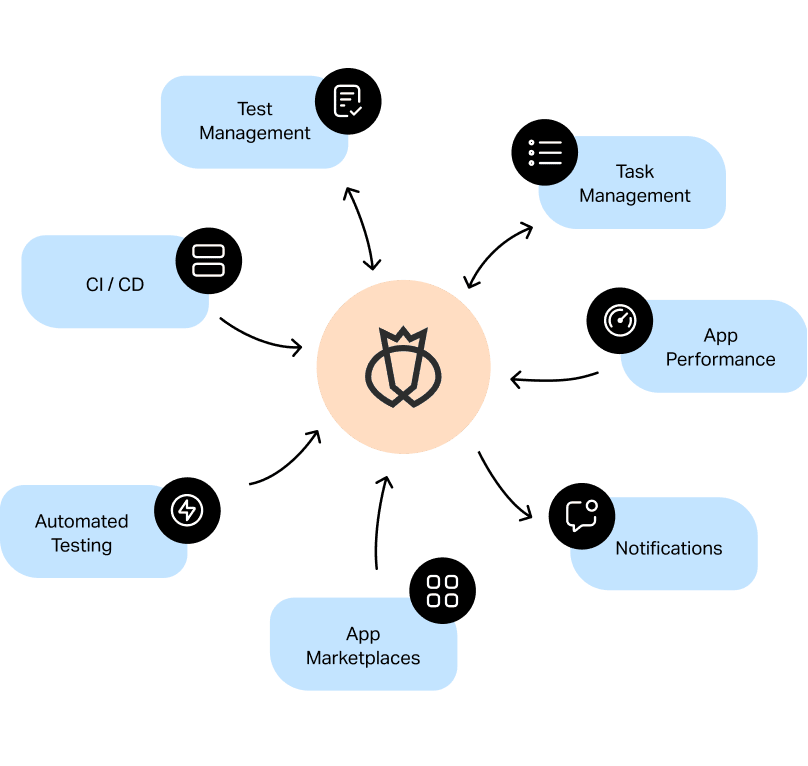From Handbook to Automated Screening: A Comprehensive Guide to Transitioning Smoothly and Successfully
In the realm of software screening, the shift from guidebook to automated processes has actually come to be a significantly essential transition for companies seeking to enhance performance and precision in their testing practices. As technology proceeds to breakthrough, the demand for effective and seamless automatic screening methods has never ever been a lot more important. The journey from guidebook to automated testing is not without its difficulties, but when come close to tactically and with a clear plan in mind, the advantages can be substantial - automation testing. In this extensive overview, we will explore key steps and factors to consider vital for an effective shift, from the initial choice of devices to the assimilation of automation into existing operations. Stay tuned to uncover the understandings that will help pave the method for a smoother and more efficient testing process.
Advantages of Automated Checking
Automated testing uses numerous benefits, boosting performance and accuracy in software application advancement processes. One key benefit is the substantial decrease in screening time. Automated examinations can be run simultaneously on multiple gadgets and running systems, significantly accelerating the testing phase compared to manual screening. This increased effectiveness permits faster feedback on the high quality of the software, enabling designers to recognize and attend to problems immediately.
Furthermore, automated testing ensures a higher level of accuracy in identifying problems. Consistency in screening is also boosted, as automated tests execute the same steps precisely each time they are run.
Picking the Right Devices

First of all, examine your objectives and requirements. Comprehend the scope of your task, the technologies included, and the capability of your team. This evaluation will certainly assist you determine the abilities and functions you require in your screening tools.
Second of all, think about the compatibility of the devices with your existing systems and procedures. Seamless combination with your current software program advancement lifecycle is vital to guarantee a smooth transition to automation.
Furthermore, evaluate the scalability and versatility of the devices. As your testing needs advance, the tools must have the ability to adjust and suit adjustments effectively.
Lastly, factor in the assistance and community around the tools. When applying automated screening, robust assistance and an energetic customer community can supply beneficial sources and assistance. By thoroughly thinking about these aspects, you can select the right tools that straighten with your demands and established the stage for a successful change to automated screening.
Composing Efficient Examination Manuscripts

When crafting examination scripts, it is necessary to think about the details demands of the software application being tested and make certain that the scripts address all critical functionalities. Clear and detailed naming conventions for examination scripts and examination cases can boost readability and maintainability. Additionally, incorporating error handling systems within the test scripts can aid in recognizing and dealing with issues without delay.
Additionally, arranging test scripts into modular parts can enhance reusability and scalability, lowering redundancy and boosting efficiency in examination script maintenance. Regular evaluations and updates to evaluate scripts are important to maintain rate with progressing software program requirements and functionalities. By complying with these concepts, testers can produce durable and effective test scripts that contribute substantially to the success of automated screening processes.
Integrating Automation Into Workflows
By seamlessly incorporating automated screening tools like Selenium or Appium into the software program growth lifecycle, teams can accomplish faster responses on code changes, leading to quicker insect detection and resolution. This combination allows for continual screening throughout the advancement process, ensuring that any problems are recognized early on, resulting in greater software program top quality. Proper combination of automation devices needs partnership in between development, testing, and operations teams to develop a unified process that maximizes effectiveness and efficiency in delivering premium software products.
Making Sure a Smooth Shift
Successfully transitioning to automated screening entails thorough preparation and cautious implementation to reduce interruptions and make best use of effectiveness in the software application development process - automation testing. To ensure a smooth change, it is important to start by carrying out a complete analysis of the present screening processes and identifying locations where automation can bring one of the most considerable benefits. Engaging with all stakeholders beforehand while doing so, consisting of developers, testers, and task supervisors, is crucial for garnering assistance and buy-in for the automation campaign
Interaction is crucial throughout this shift click to find out more phase. Clear interaction of the objectives, advantages, and assumptions of automated testing aids to manage any kind of resistance or worries that might occur. Furthermore, providing sufficient training and sources for employee to upskill in automation devices and techniques is crucial for making sure a successful transition.

Final Thought
Finally, transitioning from handbook to automated testing uses countless advantages, including boosted effectiveness and reliability. By choosing the appropriate tools, writing reliable examination manuscripts, and incorporating automation seamlessly right into operations, companies can make sure a successful and smooth change. It is vital to welcome automation as a beneficial possession in software testing processes to enhance overall top quality and productivity.
In the world of software application testing, the shift from guidebook to automated procedures has actually ended up being a progressively crucial shift for organizations seeking to improve efficiency and accuracy in their screening techniques. Automated examinations can be run simultaneously on several tools and running systems, substantially speeding up the testing stage compared to manual screening. Consistency in testing is additionally boosted, as automated tests execute the very same actions specifically each time they are important link run.To guarantee the effective execution of picked testing tools, the creation of effective test manuscripts plays a critical duty in validating the performance and efficiency of automated procedures - automation testing. By complying with these concepts, testers can produce reliable and robust test manuscripts that contribute substantially to the success of automated screening procedures